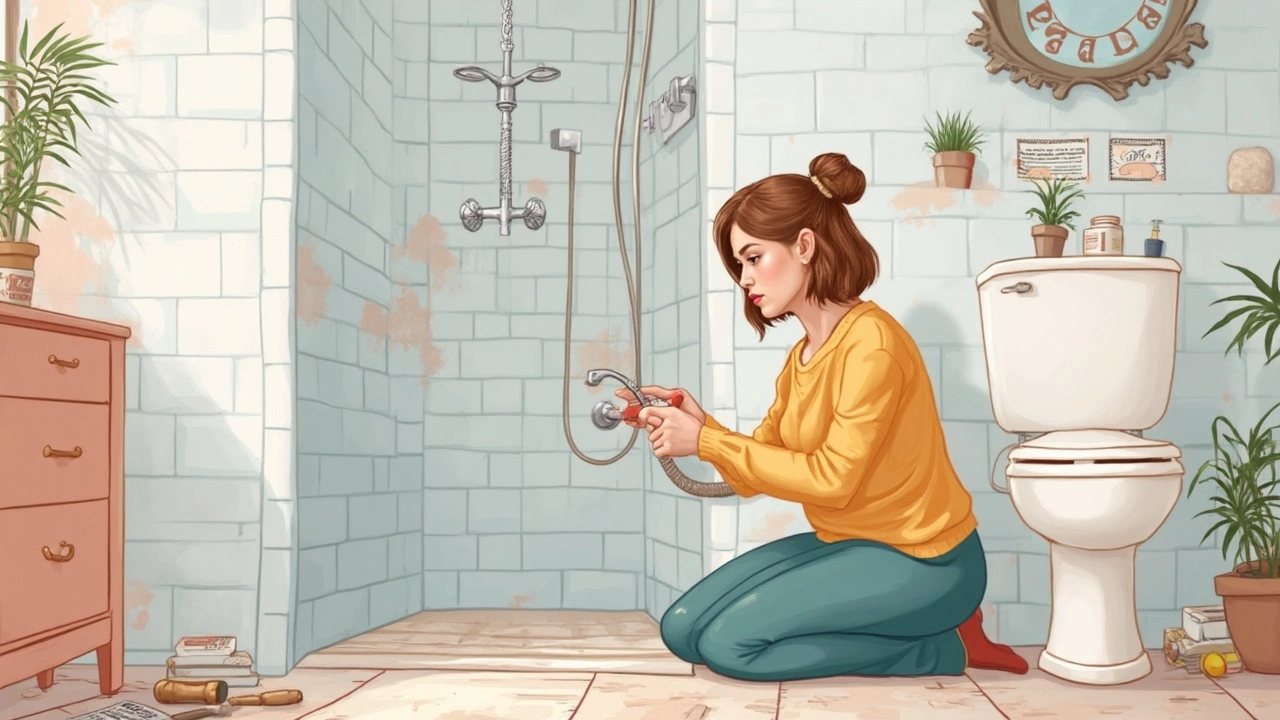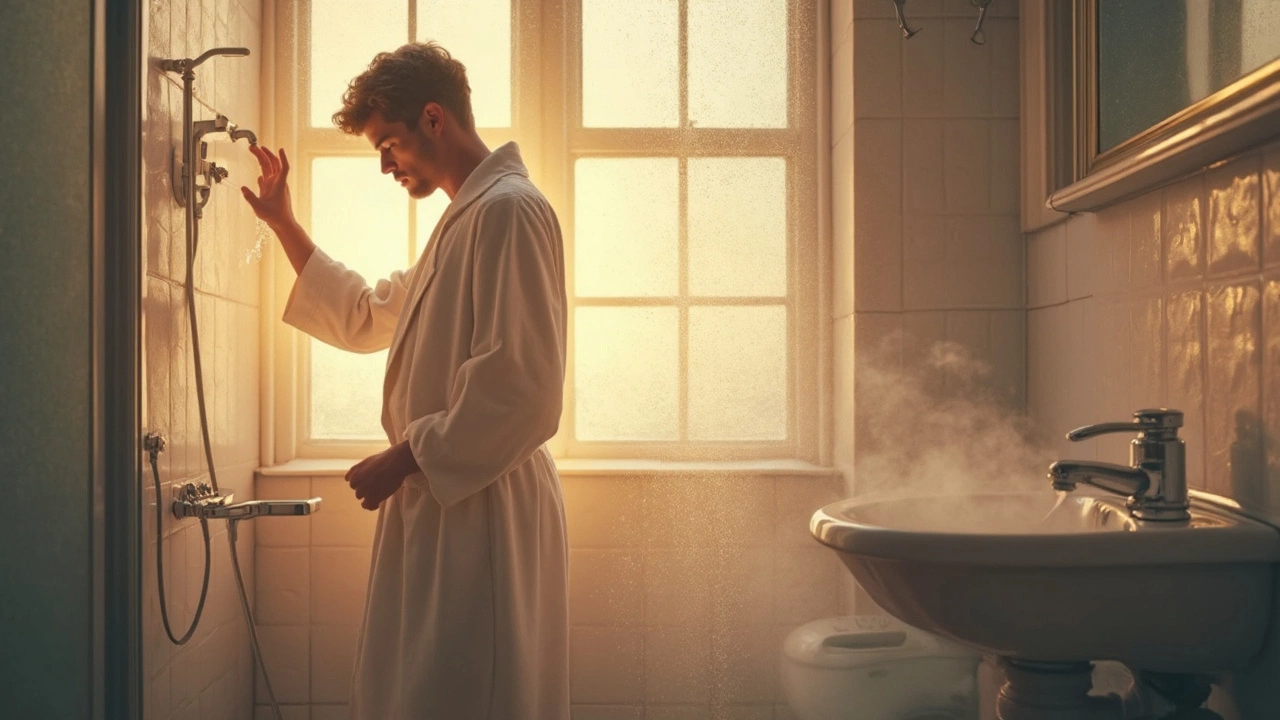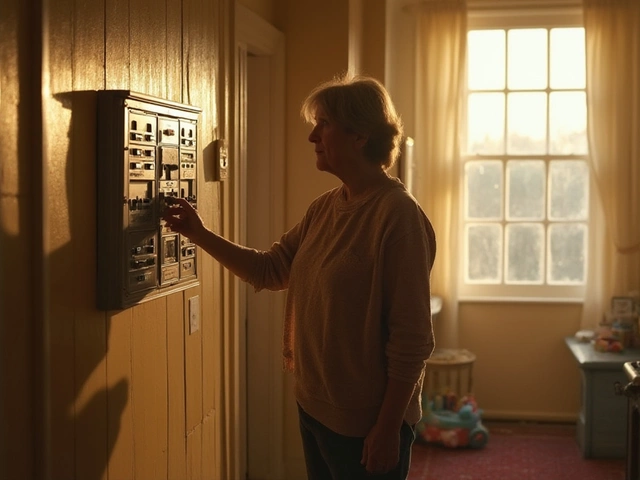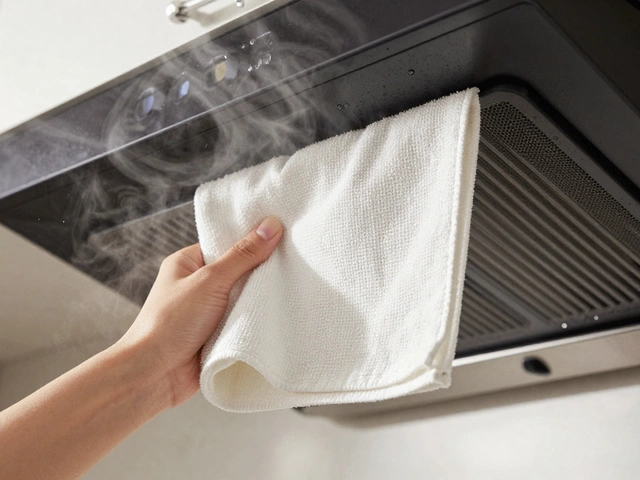Few things start the day off worse than stepping into a cold shower when you know hot water is working fine at the sink. Kids banging on the door, stopwatch ticking—you just want a hot rinse, not a plumbing mystery.
So what gives? If you’re getting steaming water at the bathroom sink, but nothing but cold from the same bathroom’s shower, you’ve got a weird but common issue. The good news: your water heater is probably fine. The bad news: the fix depends on what’s going on inside your walls—or behind that shower handle.
Most often, the trouble’s sitting right at the shower valve. It’s the part behind your faucet or handle that actually mixes cold and hot water. These things clog up, break, or get stuck. And sometimes, right after someone works on the water pipes, the cartridge inside can get jammed with debris. If you’re seeing this out of nowhere—and the rest of the house has regular hot water—chances are, it’s a shower-only problem, not a whole-house disaster.
- Spotting the Problem: Why the Sink Works but the Shower Doesn’t
- Hot Water Valves: The Usual Suspect Explained
- Mixing Valves and Cartridges: Where Hot Water Goes to Die
- DIY Checks: What You Can Safely Try First
- When It’s Time to Call a Pro
Spotting the Problem: Why the Sink Works but the Shower Doesn’t
If you’re wondering why you get hot water from the sink but not from the shower, you’re not alone. This problem pops up all the time, especially in older homes or places where plumbing work’s been done recently. The quick insight: your water heater is almost never the real culprit when just one fixture is acting up—especially when the hot water is fine elsewhere.
Here’s how your system works. Both the sink and shower pull hot water from the same source—usually the same pipe, too. But only the shower has a mixing valve or cartridge inside the handle. This piece juggles both hot and cold water to keep you from getting scalded. If it gums up, you won’t get hot water at the shower no matter what.
You might spot some signs that really point to the shower valve, not the heater:
- Your kitchen sink and bathroom sink both give you hot water, but the shower still runs cold.
- The shower starts warm for a few seconds, then flips to cold and stays there.
- No change in water pressure, just the temperature that’s off in the shower alone.
Sometimes, mineral buildup or debris from old pipes can block the hot supply at just one fixture. Other times, a pressure-balancing valve in the shower gets stuck or fails. Rarely, the hot shutoff under the shower is closed partway, or a plumber left a mixing valve reversed without telling anyone.
If you’ve ruled out issues with the water heater itself—for example, nobody else’s bath goes cold, and the sinks work fine—the smart money’s on a problem at the shower end. Remember, every minute you save on finding the real cause means more time not listening to your kids complain about freezing in the bathroom.
Hot Water Valves: The Usual Suspect Explained
If you have hot water coming out of your sink but only cold water in the shower, your shower’s mixing valve is usually to blame. This valve sits behind your shower handle or wall plate and combines cold and hot water to get that just-right temperature. When it malfunctions, it can cut off hot water flow completely—especially if it’s stuck, clogged, or if the part inside (called a cartridge) gets jammed with mineral buildup or debris. Surprisingly, this is one of the most common causes for a cold-only shower in homes with perfectly fine water heaters.
Here’s what makes these valves tricky: they’re working constantly, and every time the water’s turned on and off, tiny minerals in your water line can slowly gunk them up. If your town’s water is hard and leaves crusty deposits on faucets, your valve is probably at risk for buildup. Some newer valves are built with anti-scald technology, which, while safer for kids, can malfunction and prevent hot water from coming through if the settings are off or if there’s even slight blockage. If you’ve just had plumbing work, sometimes sediment gets shoved into the valve by accident. A quick stat: studies show over 60% of sudden shower heat issues are actually traced to mixing valves, not the water heater itself.
| Shower Hot Water Issue | Most Likely Source | Approximate Repair Time |
|---|---|---|
| Hot everywhere, cold in shower | Mixing Valve/Cartridge | 30-60 minutes (DIY or pro) |
| Cold everywhere | Water heater | 1-3 hours (usually professional) |
| Temp goes hot/cold | Valve or Pressure Imbalance | Varies (valve to main line) |
Worried about taking things apart? You might recognize signs of valve issues if your shower handle turns but doesn’t control the temperature, or if you hear brief knocking or whistling behind the wall. Sometimes, you’ll feel lukewarm water that suddenly cuts cold when another tap is running. A good tip: if you have two showers and only one has this problem, that’s another red flag pointing straight to a mixing valve issue. If that’s the case, don’t rush to replace the water heater—focus on the valve first.

Mixing Valves and Cartridges: Where Hot Water Goes to Die
If you get hot water at the sink but not in the shower, your mixing valve or cartridge in the shower faucet is usually the culprit. These parts are simple, but they get gunked up fast with hard water or tiny bits of debris, especially after plumbing work or a water main break in your area. The whole point of a mixing valve is to blend hot and cold water to your preferred temp, so when it fails, the temperature goes sideways—often leaving you shivering.
The most common sign of a stuck or failed cartridge is having only cold (or only hot) water coming out, even when you crank the handle all the way. Sometimes it gets stuck in one position or the seal inside just gives out. Statistics from plumbing manufacturers show cartridges are the top failed part inside modern shower valves—they recommend changing them every 5-7 years in homes with hard water.
| Issue | Shower Mixing Valve Symptom | Quick Fix Possible? |
|---|---|---|
| Hard water buildup | Low or no hot water in shower only | Yes, temporary clean can help |
| Cartridge worn out | Handle stuck or loose, water temp wrong | No, usually needs replacement |
| Debris from plumbing work | Hot water lost after repairs | Yes, clean or flush valve |
You don’t need to break out the toolbox yet, but it helps to know what’s inside. Most mixing valves and cartridges pop out with just a screwdriver and maybe a hex key, but getting to them usually means pulling off the shower handle and trim plate. Every major brand—like Moen, Delta, or Kohler—has a different style, but the dirty secret is they all gunk up the same way.
- If you recently had water shut off in the house, debris could have shot up and clogged the cartridge. Flush it if you feel up to it.
- If the hot water is fine at every other fixture, your water heater isn’t the problem. Don’t spend money testing it or calling specialists for your whole system.
- Cartridges are cheap (usually $12–$35) and can save you hundreds in plumber bills if you swap them yourself.
Just remember, if your house is older and you’re nervous about getting the cartridge out, a plumber can do it in about 20 minutes. But understanding what’s likely broken saves you time, stress, and a mountain of cold showers.
DIY Checks: What You Can Safely Try First
Before you grab your phone to call a plumber, there are a few things you can do that might solve the problem or at least tell you what’s really going on. Plenty of people end up wasting money and time over easy fixes, so give these a shot first.
First up, check if the hot water is truly hot water—not just lukewarm—at both the sink and the tub faucet (if you have one). Sometimes, it’s just the shower head or handle that’s the troublemaker. If you notice that the tub faucet spits out hot water while the shower’s still ice-cold, that signals your shower mixing valve is likely clogged or broken.
Now, let’s walk through some simple things you can try on your own:
- Test Other Faucets: Turn on all the hot water faucets in your house. If just the shower is cold, focus your efforts there. If more than one spot is having the same issue, it might be a bigger problem than you can tackle solo.
- Clean the Shower Head: Mineral build-up can sometimes block hot water flow. Unscrew the shower head, soak it in vinegar for half an hour, then scrub it with an old toothbrush. Replace it and see if that made a difference.
- Check the Anti-Scald Valve: Most modern showers have an anti-scald device, often hiding behind the handle. They stop water from getting too hot, but sometimes they get stuck or are set too low. Adjust it slightly to see if that helps. Look for a plastic disc or dial behind the handle, and gently turn it while following the manufacturer’s instructions (search your shower brand and “anti-scald adjustment” for quick guides).
- Inspect for Drips or Leaks: If you see water dripping from the tub spout when the shower’s on, the diverter may not be closing all the way. This means hot water is leaking out before it even hits your shower head.
- Try the Shower Valve Reset: Sometimes, turning your main water supply off and then back on can break up blockages in the shower valve. If you’re comfortable, shut off the water, wait 10 minutes, and then turn it back on. Anything funky dislodged may clear your pipes.
A recent survey by the HomeServe network found that about 30% of so-called “no hot water in the shower” calls were actually fixed by the homeowner with just a screwdriver and some common sense. That’s a good chunk of fixes! Here’s a quick look at common reasons for hot water skipping the shower, and how often people actually solve it themselves:
| DIY Cause | Fixed by Homeowner (%) |
|---|---|
| Clogged shower head | 45 |
| Misadjusted anti-scald valve | 30 |
| Cartridge cleanup/replacement | 20 |
| Diverter leak | 5 |
Save your receipts and your sanity. Tackle these steps before spending big—sometimes, all your shower needs is a quick tweak or cleaning.

When It’s Time to Call a Pro
You’ve done your best. You’ve twisted the handle, checked the other faucets, and maybe even peeked behind the shower plate. Still stuck with cold showers? Sometimes, DIY just won’t cut it. That’s when bringing in a licensed plumber is worth every penny.
If you hear strange grinding noises, see leaks behind the wall, or smell a funky, almost rotten-egg scent near the pipes, stop. These can signal big issues like bad cartridges, failing anti-scald valves, leaks, or even potential gas leaks in homes with gas water heaters. Messing with plumbing beyond your comfort zone sometimes makes the problem much worse.
Here are clear signs it’s time to call a pro:
- No hot water in the shower after you’ve checked the sink, cleaned the shower head, and flushed the lines.
- Shower valve or handle is loose, broken, or very stiff (a busted mixing valve often needs special tools).
- You can’t shut the water off fully to do repairs (main shutoff could be stuck or broken).
- Water is leaking behind shower walls or pooling at the base of the tub.
- You find rust, corrosion, or chunks of debris when you remove the valve cover.
If you’re worried about cost or repair time, here’s what most plumbers deal with and how long it usually takes:
| Common Shower Problem | Average Cost (USD) | Typical Repair Time |
|---|---|---|
| Replace shower cartridge | $150 - $300 | 30–90 minutes |
| Fix mixing valve | $200 - $400 | 1–2 hours |
| Repair behind-wall leak | $500 - $1200 | 2–5 hours |
| Main water shutoff fix | $300 - $700 | 1–3 hours |
Don’t wait if water starts to damage drywall or flooring—that gets expensive fast. The longer you leave these problems, the higher the bill. And hey, when hot water flows again, you’ll never take a good shower for granted.





